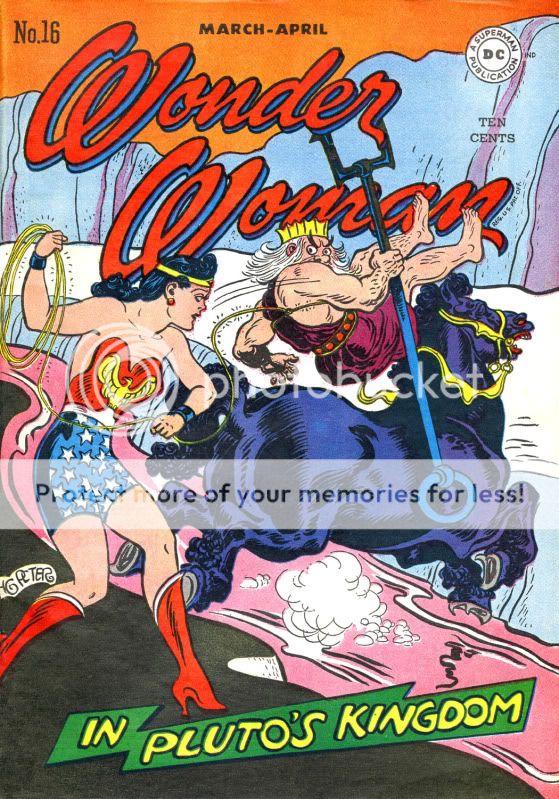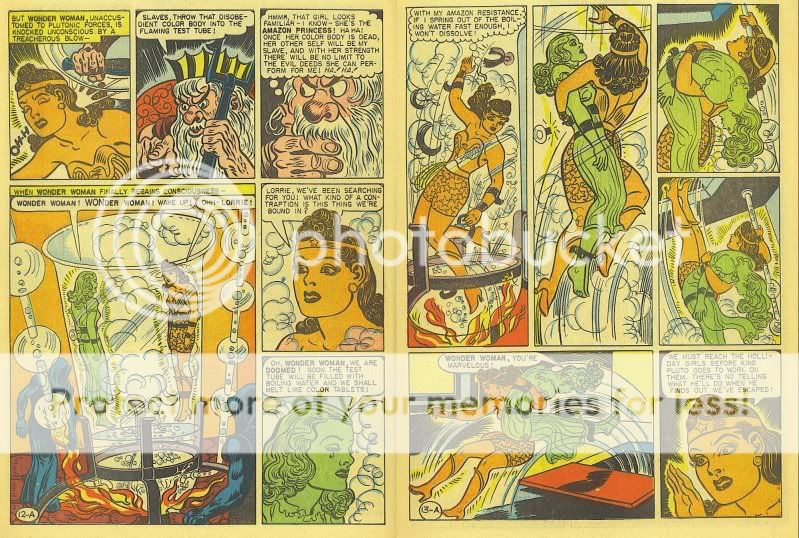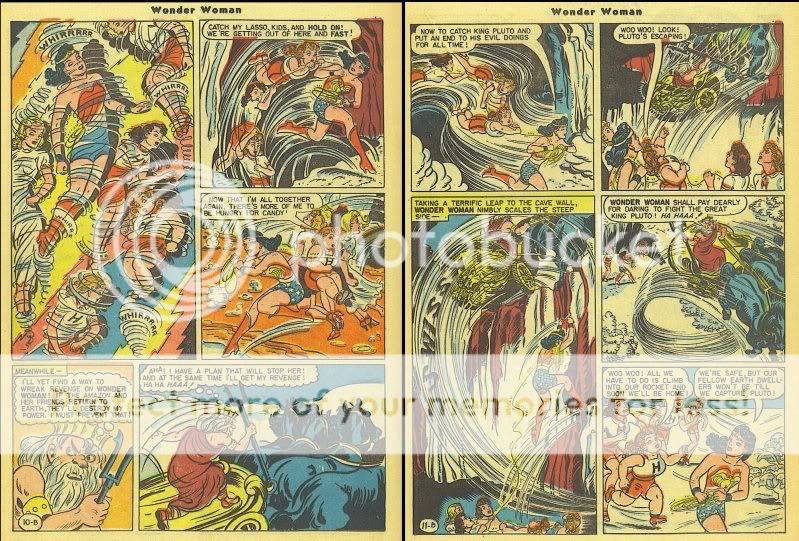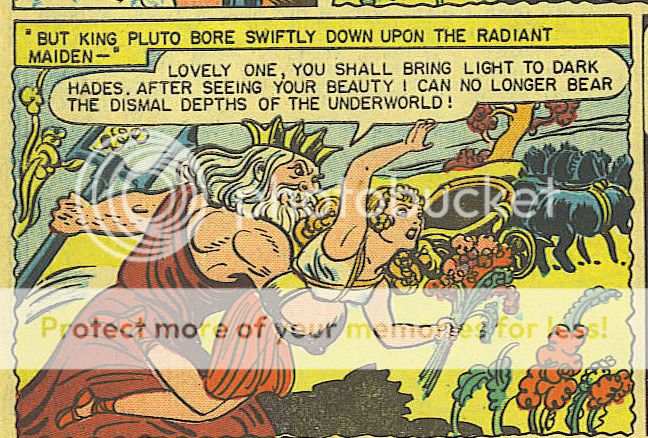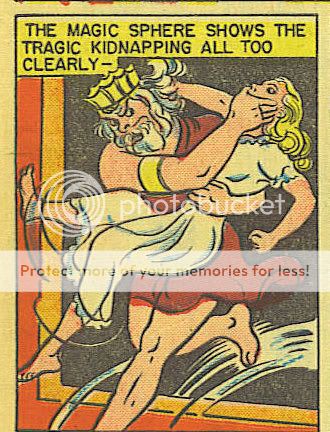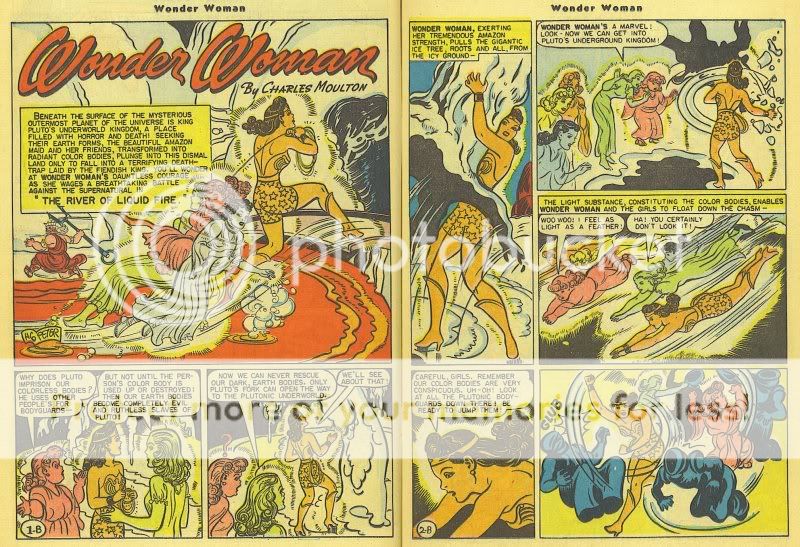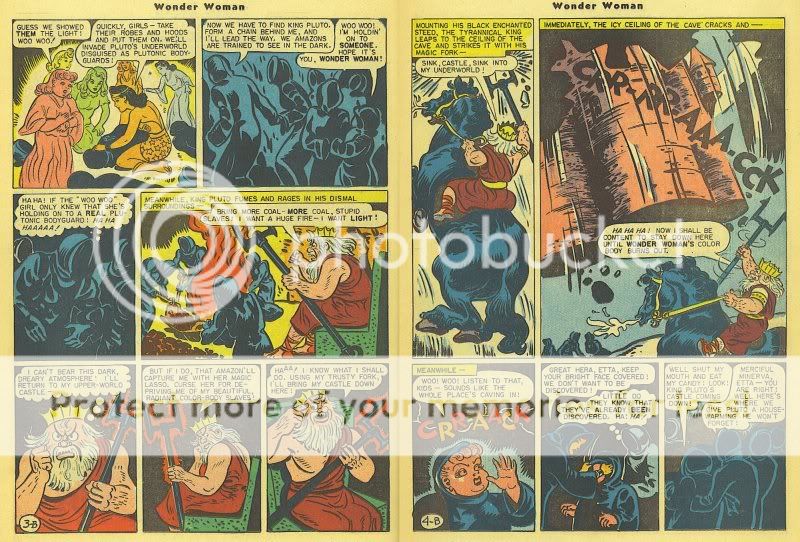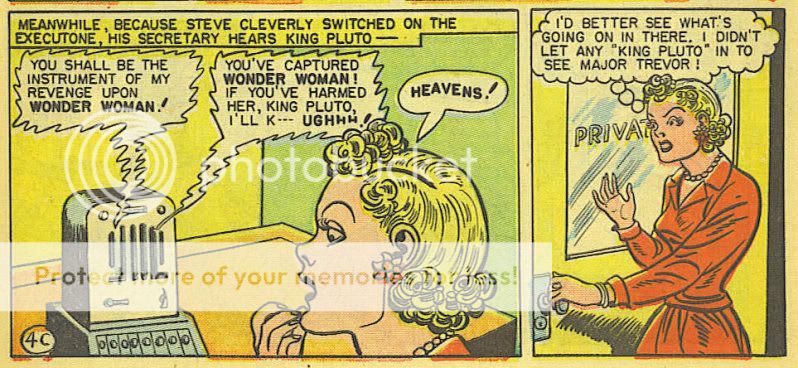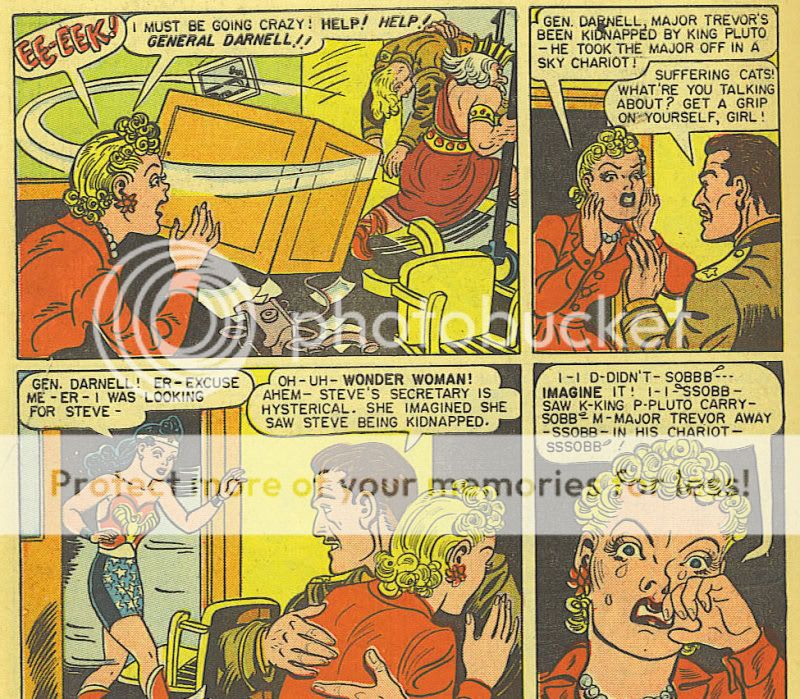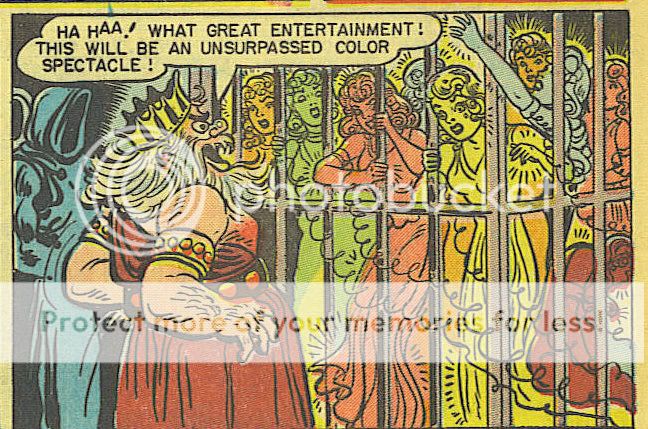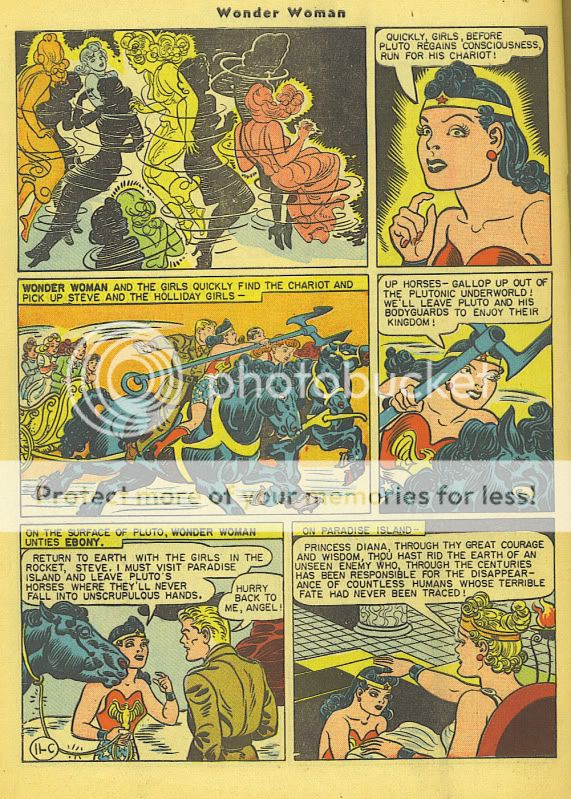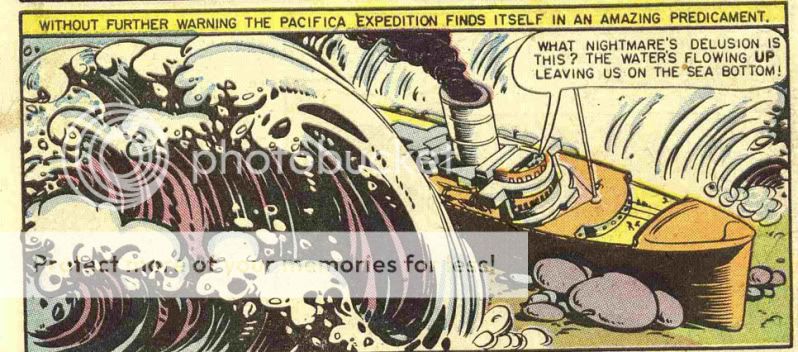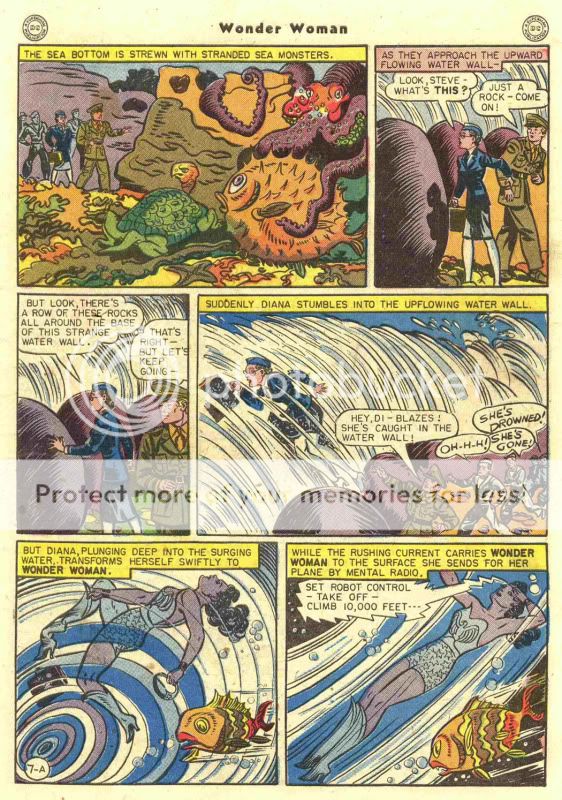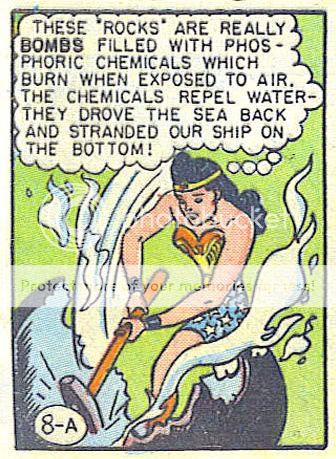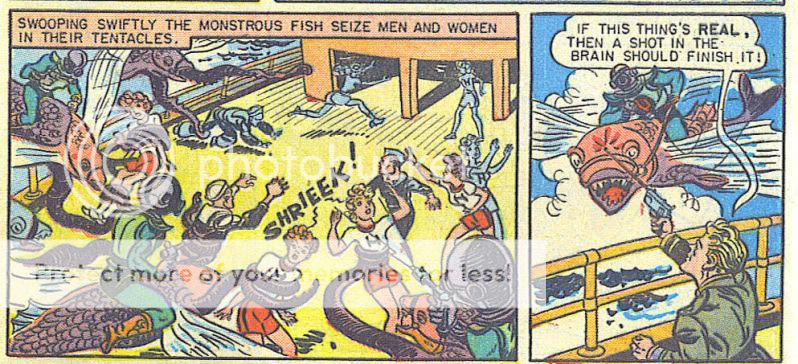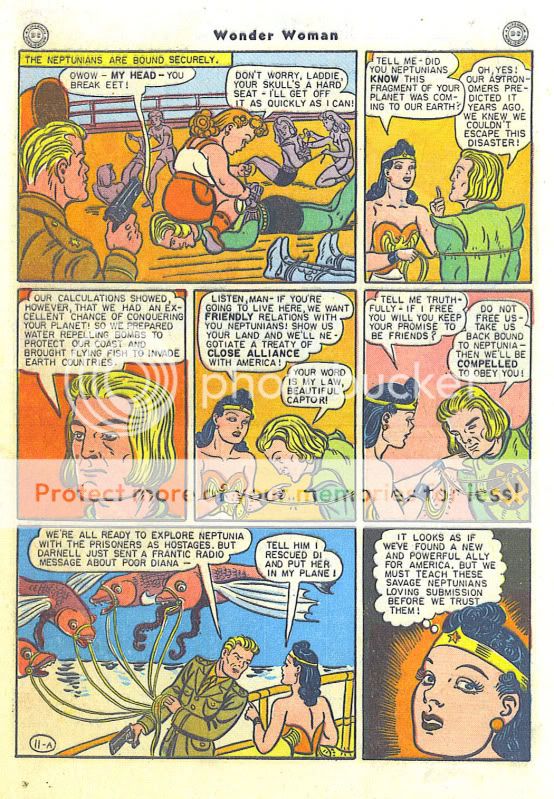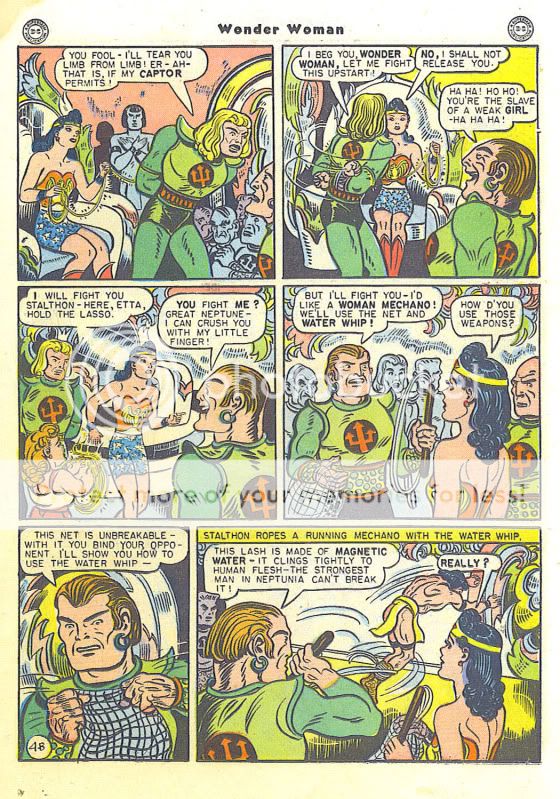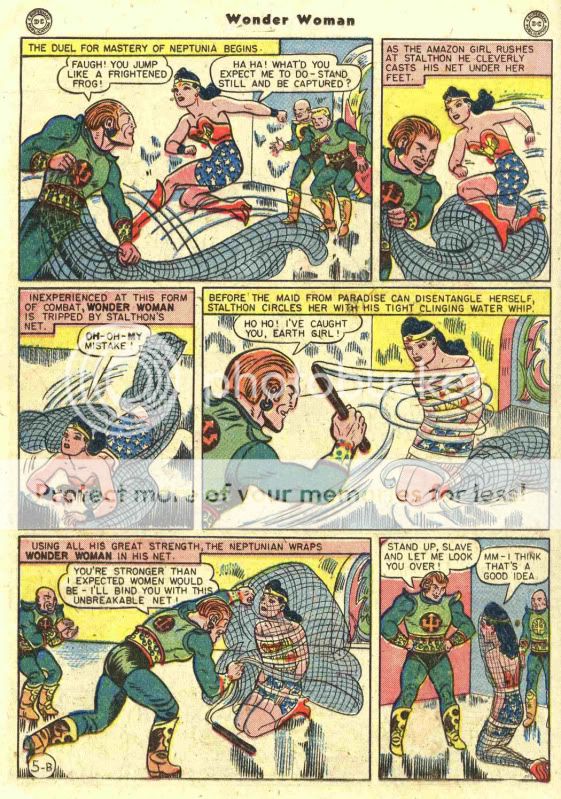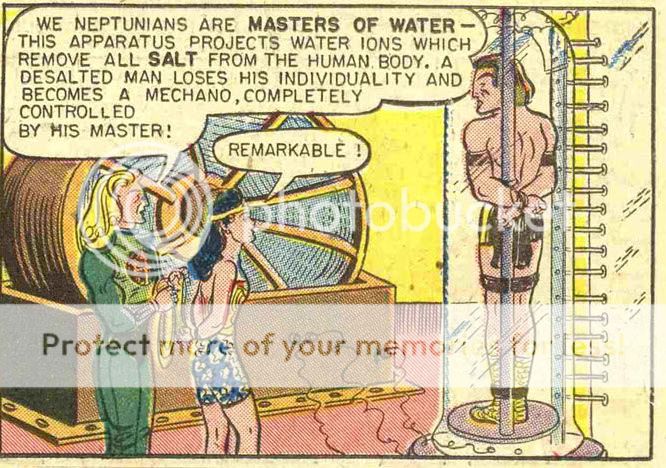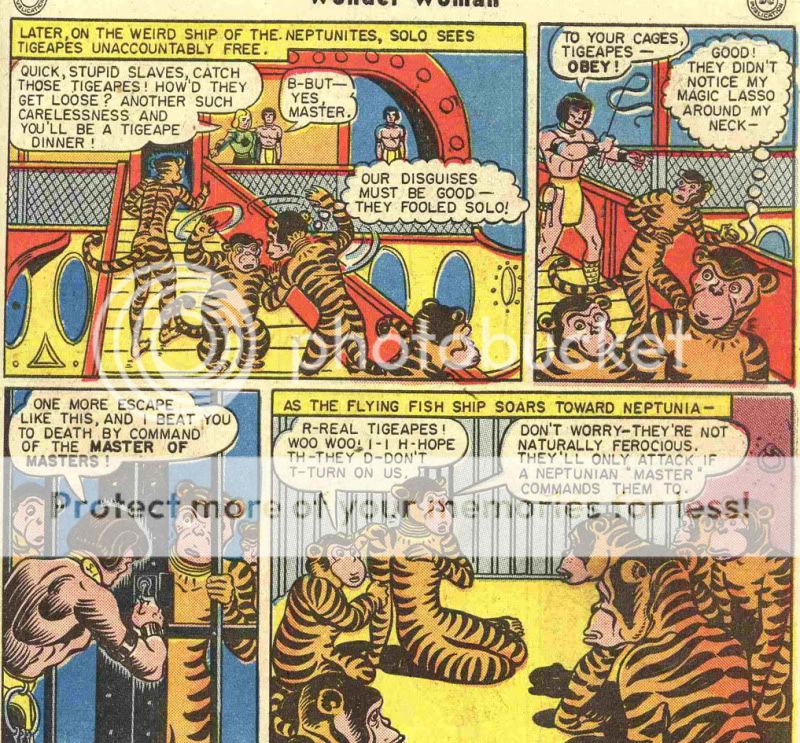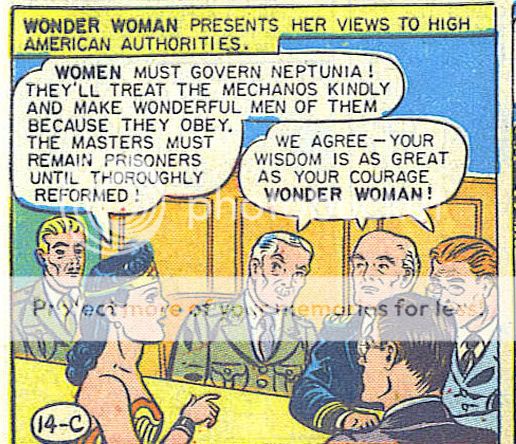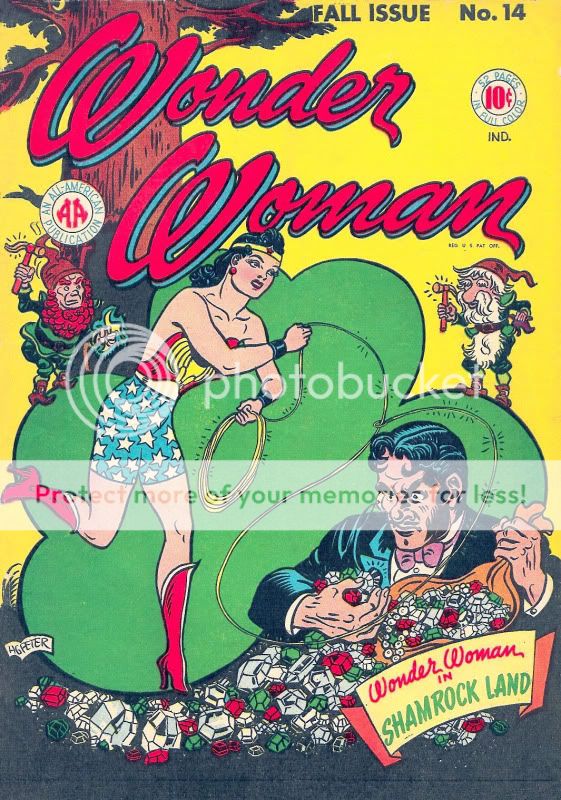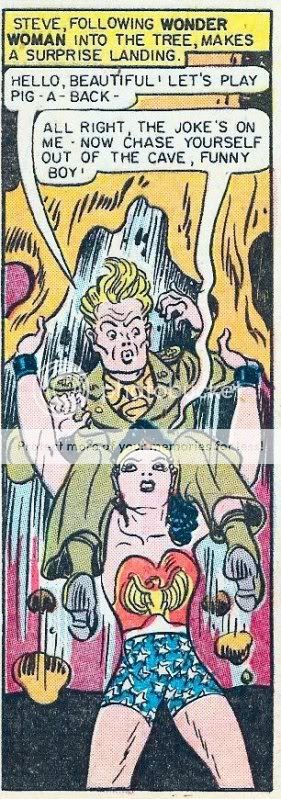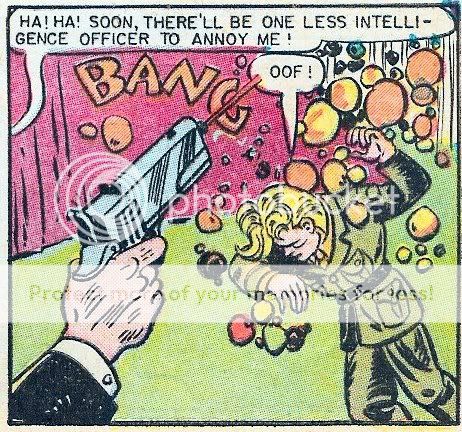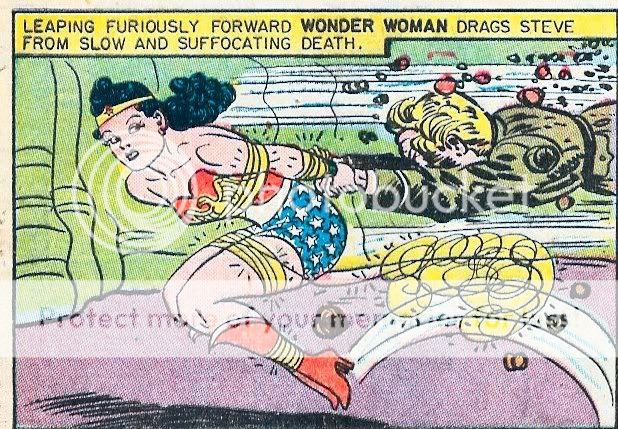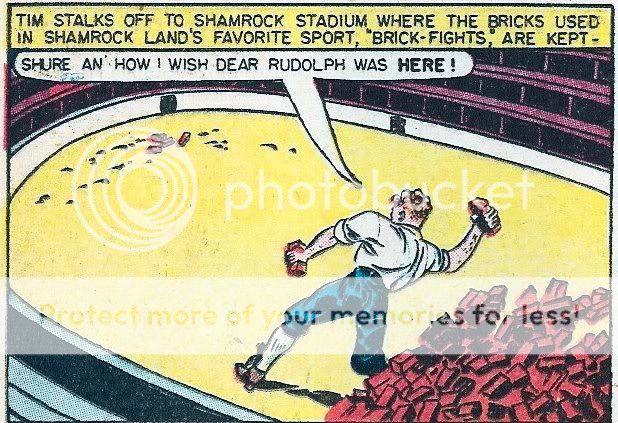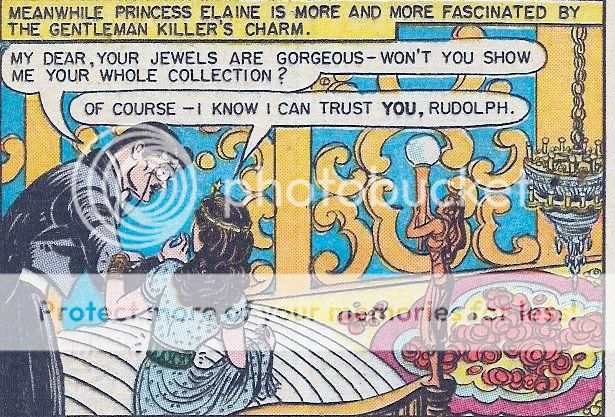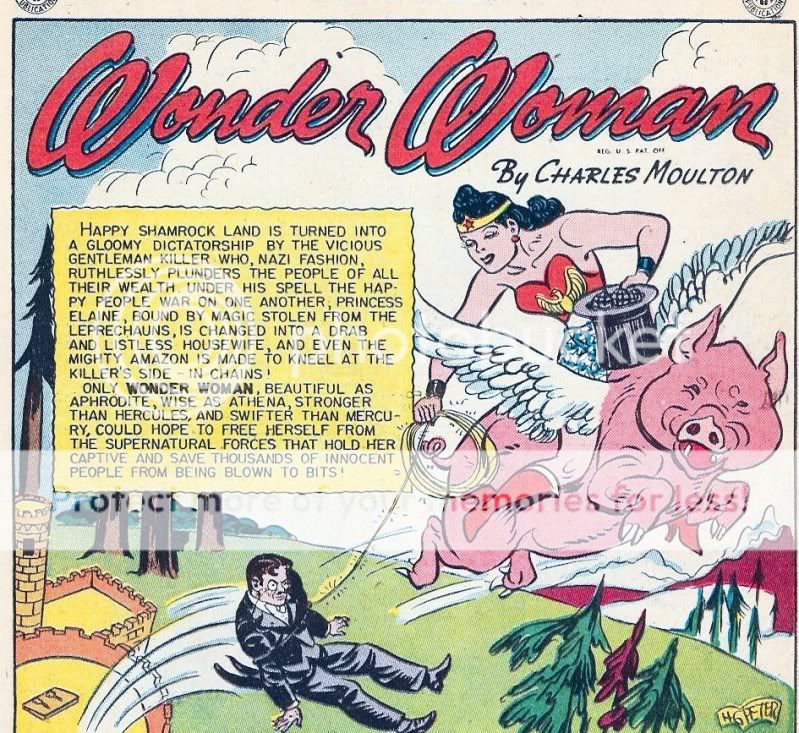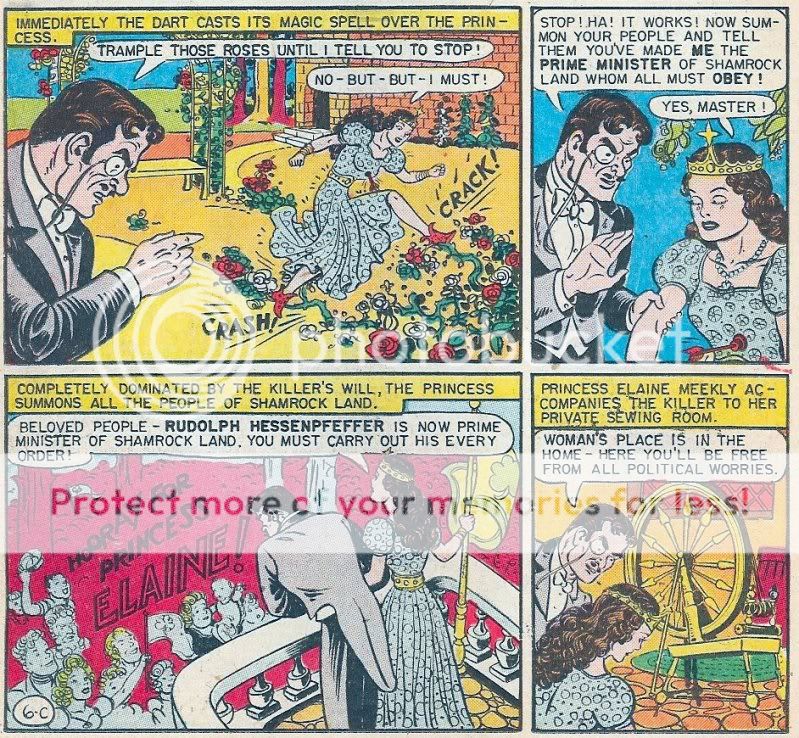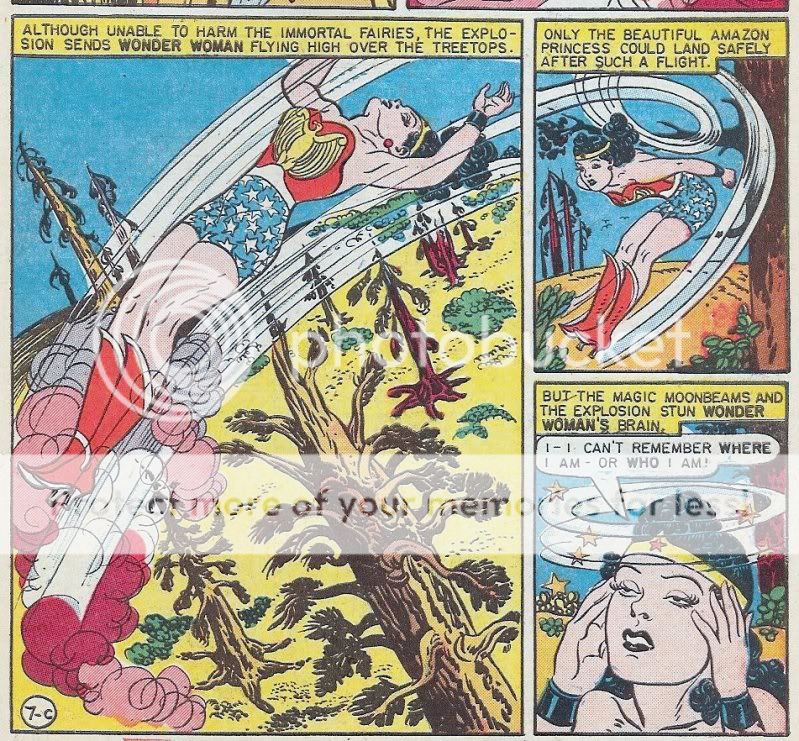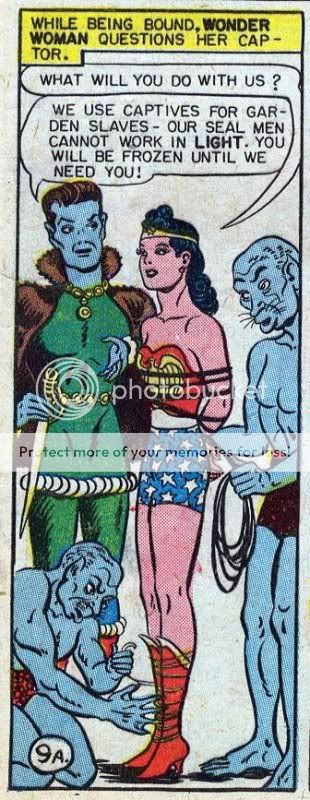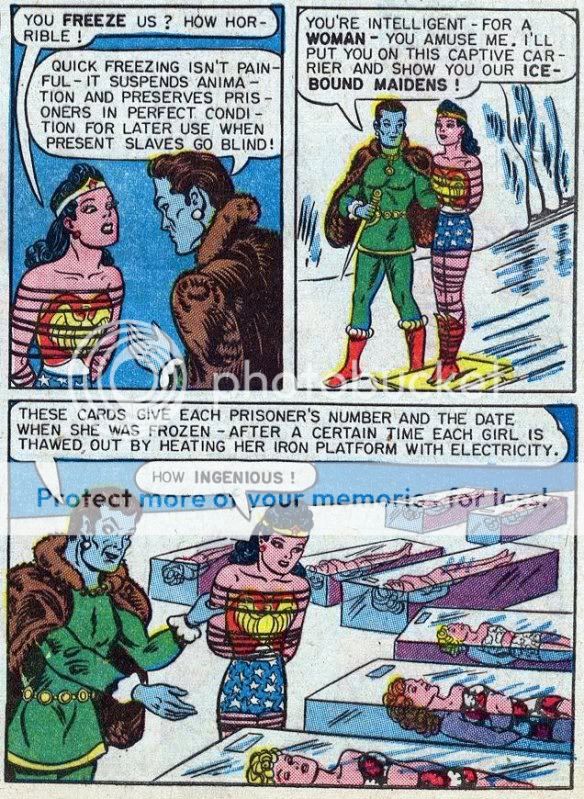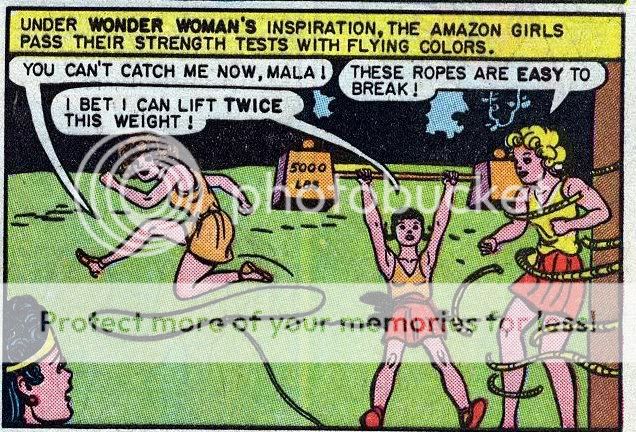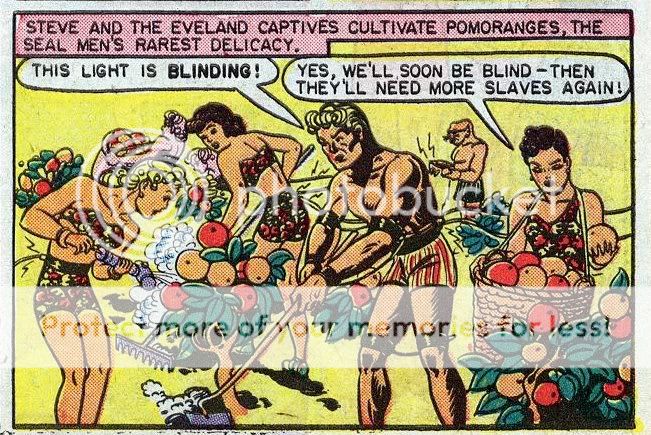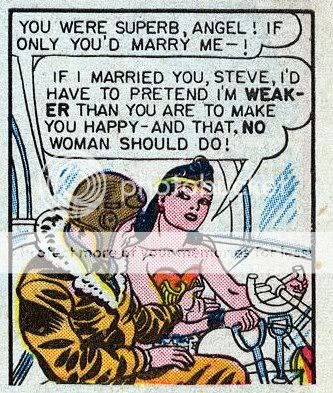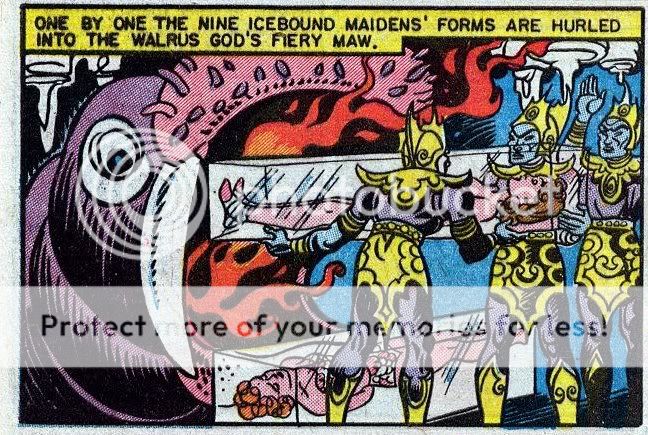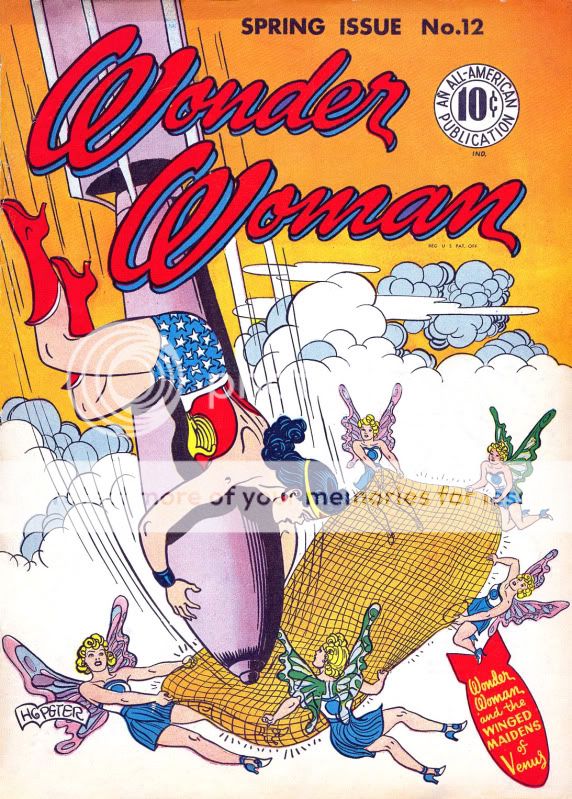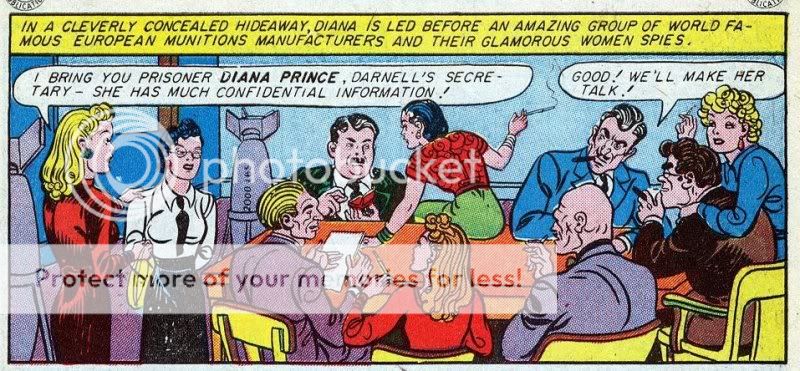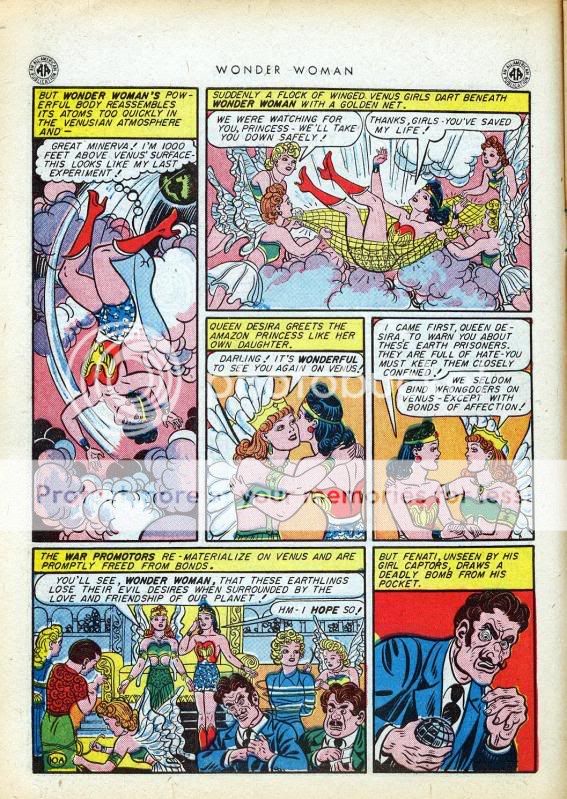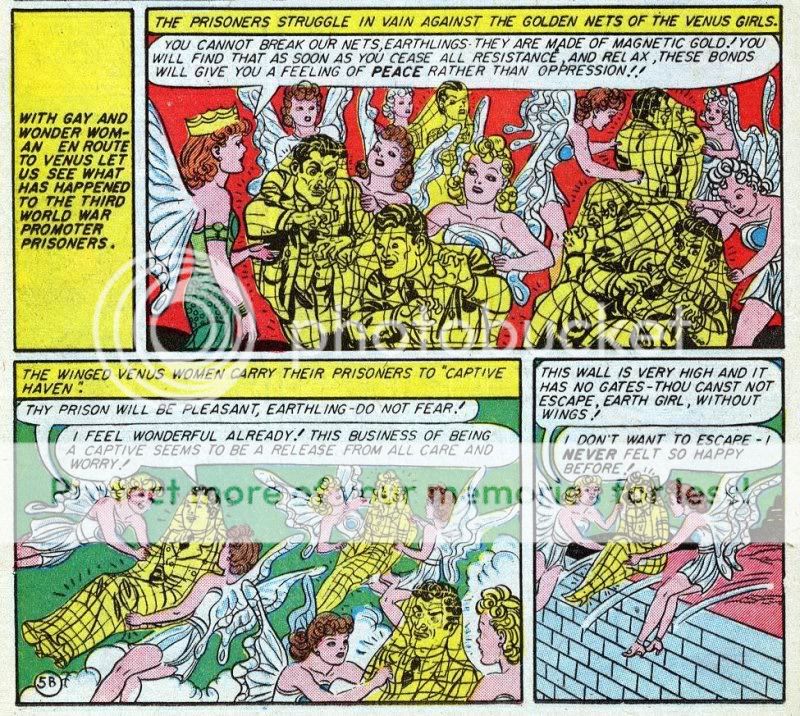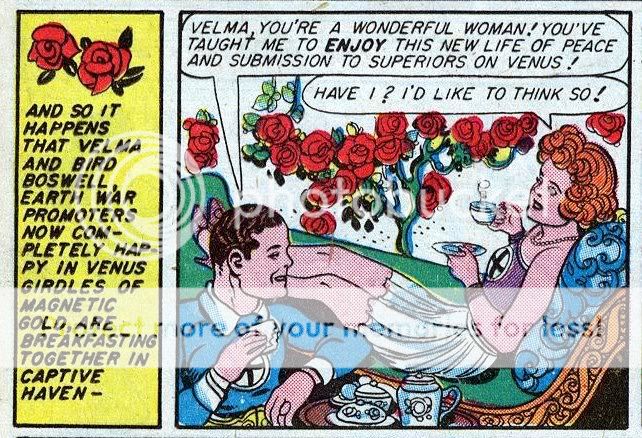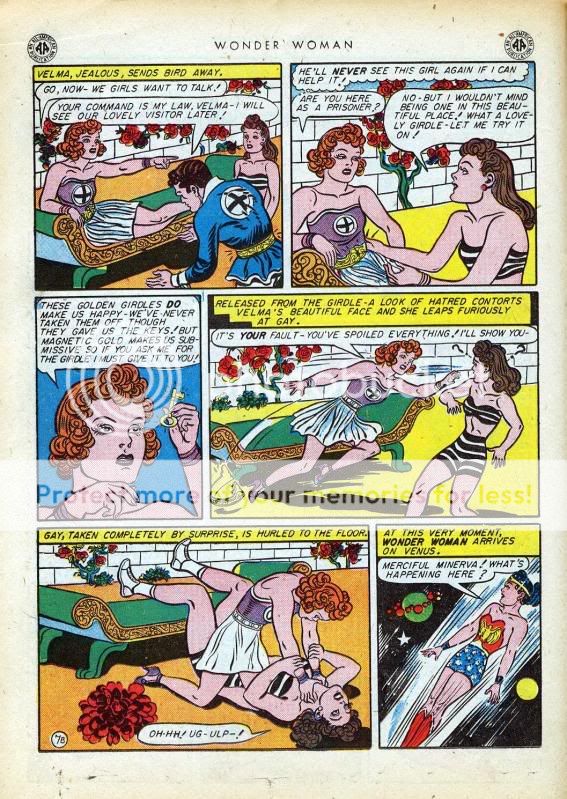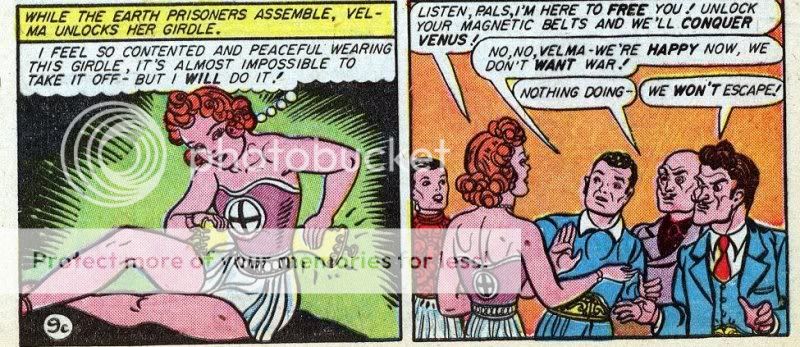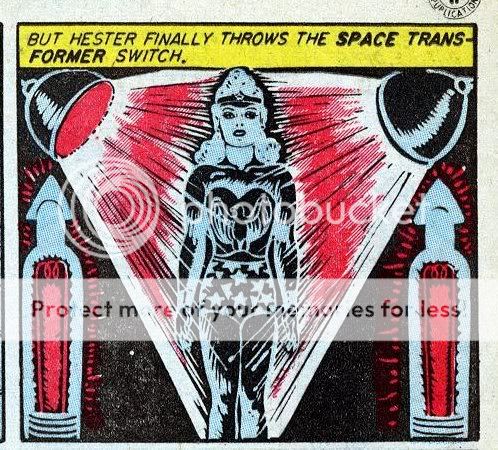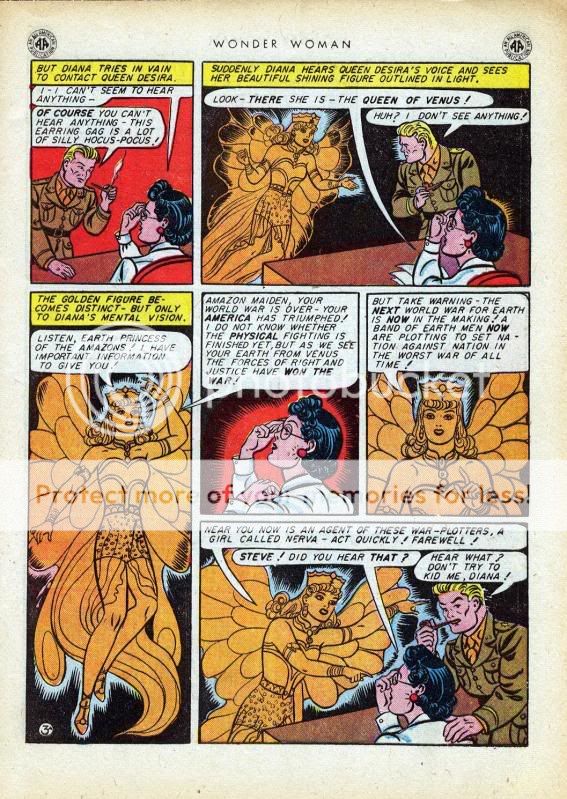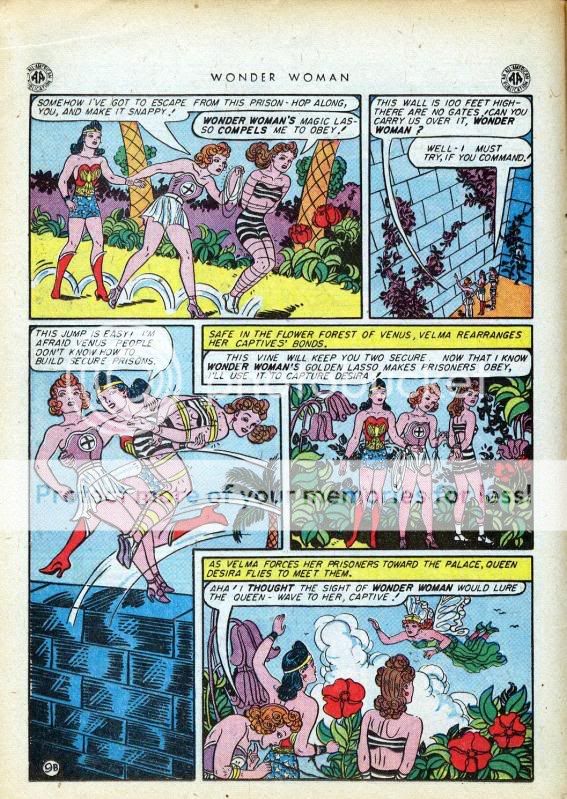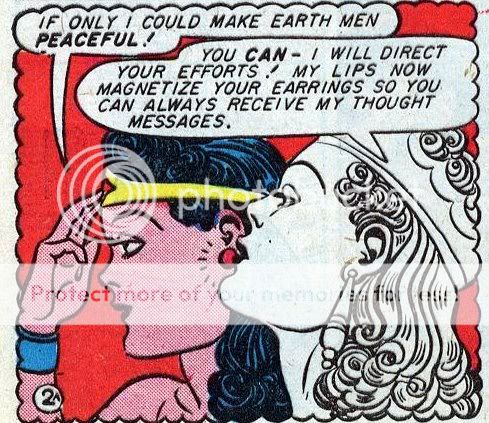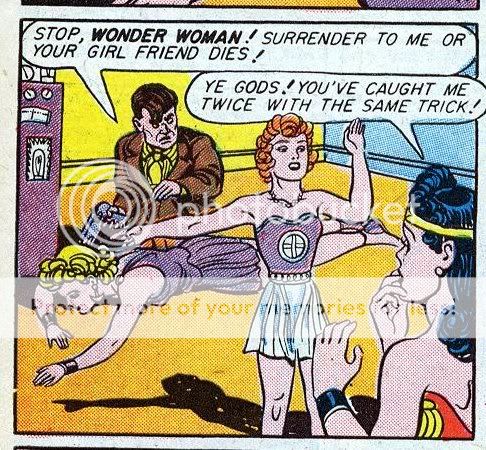Last week I blogged about the Marston/Peter Wonder Woman #11, which featured a cross-dressing villain named Hypnota among other things. In reading that issue, I wasn’t exactly sure what Marston thought about Hypnota in particular, or about cross-dressing in general. So I thought I’d take a brief break from going through all the issues of WW, and instead read another Marston cross-dressing villain story from a bit earlier, in one of his first Wonder Woman efforts, Sensation Comics #2.
Before I talk about that story, though, I wanted to mention another book I just finished: Graham Rawle’s Woman’s World. This is going to go on for a little bit, but we’ll get back to Wonder Woman, I promise.
I’ve talked about Rawle’s collage cartoons before. Woman’s World is collagy as well; Rawle wrote the text using words and phrases from women’s magazines published in the early 60s. It’s an impressive technical achievement in some ways. In other ways, you read it and you say, how could such an innovative process have resulted in such a staid narrative?
The narrative is particularly predictable when it comes to gender and cross-dressing. The story is narrated by Norma, and is mostly about her brother, Roy. Eventually Rawle reveals that Norma and Roy are the same person; the real Norma was killed as a child, the trauma caused her brother, Roy, to freak out, so that he started to wear women’s clothing and think that he was Norma part of the time. “Norma” is obsessed with women’s magazines and clothes, which gives Rawle the chance to use a lot of the cleaning product descriptions and advertising slogans and superficial cliches he found in all those women’s magazines he’s using to write his book.
So basically, Rawle presents us with a male-to-female cross-dresser who is (1) incredibly superficial and obsessed with surface femininity (Norma gets into big trouble because she just has to, has to, has to get a photograph of herself all dolled up and beautiful); and (2) completely insane. Sound familiar?
It sounds familiar to me anyway; both tropes are incredibly overused, to the point of rote idiocy, in popular representations of cross-dressers. The “they cross-dress, so they must be insane” schtick is used in just about every other major horror film, it seems — from Psycho, most obviously, down to Silence of the Lambs. The notion seems to be that before a guy would dress like a woman he’d have to have gone completely round the bend, to the extent of actually being a victim of multiple-personality disorder.
The “obsession with surface” thing is also really tired. Trans-activist Julia Serano has a great anecdote in her book “Whipping Girl” about being approached by some television show which wanted her to appear on a segment they were doing about male-to-female trans folks. The television people asked her if they could film Serano getting dressed to go out…putting on her make-up and dresses and that sort of thing. Unfortunately, Serano dresses the way a lot of women dress, which is to say, she doesn’t really wear make-up, often wears pants, and generally doesn’t get all dolled up to go off to her not especially glamorous job (she’s an academic biologist.) All of which she told the television producers, who, of course, decided not to film her, because they wanted yet another story about how obsessed trans people were with surface femininity and appearances and so on and so forth.
In short, when Graham Rawle thought to himself — “who would be obsessed with reading women’s magazines and learning how to be a woman and learning how to be feminine…um…I know! A cross-dressing man! And wouldn’t it be funny if she was really overblown and campy and not actually all that good at behaving like a real woman!” — again, when he thought all that, he was thinking just like those television producers. Which is to say, he wasn’t exactly thinking at all; he was just trying to be titillating and transgressive in the most banal and unthreatening way possible.
Okay, so…back to Wonder Woman and Sensation Comics #2. This story starts off with Nurse Diana Prince caring for a badly injured Steve Trevor. Steve is quickly kidnapped by a mysterious evil-doer named Dr. Poison. Lots of hijinks ensure, involving a chemical formula that makes soldiers interpret orders backwards and a bevy of courageous sorority girls— but the point is, at the end of the story, it is revealed that Dr. Poison…is a woman!

What’s interesting about this to me, in comparison to the Rawle story, is how thoroughly anti-climatic it is. There isn’t any effort to explain why she’s dressing up as a man. There isn’t any effort to ridicule her for dressing up as a man. There’s barely any effort to suggest that what she was doing was incongruous in any way.
Because Marston provides so little in the way of exegesis, it’s hard to know what he thinks, or what we’re supposed to think, about the cross-dressing. I can think of a bunch of possible ways to parse the scene — but, as I’ll discuss, none of them seem to fit perfectly.
1. Women who dress as men are ridiculous or incongruous, or going against nature in some way.
There’s a little evidence for this; WW makes a crack about Dr. Poison’s delicate hands, suggesting that a woman can’t perfectly imitate a man. The remark is somewhat undercut, though by Steve’s obvious and complete befuddlement. He couldn’t tell she was a woman, clearly. Moreover, I don’t think the reader can tell she’s a woman until WW reveals the truth. There isn’t any effort to tip us off; she doesn’t do or behave in a womanly manner at any point. It’s not even clear whether we’re supposed to see the cross-dressing as funny, exactly. It’s true that the scene after the unmasking has a farcical air about it…but the one thing that is more or less specifically mocked is Poison’s ethnicity, not her drag king status:
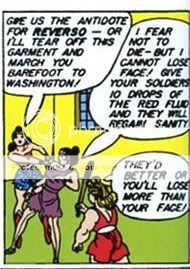
There’s certainly evidence, here and elsewhere that Marston had unpleasant racial opinions, but he’s more circumspect about cross-dressers.
2. Cross-dressing is evil and perverse, and so is the provenance of villains.
Richard Cook suggested this was what Marston was up to in a comment on the Wonder Woman #11 thread.
You say that Marston didn’t think that cross-dressing was wrong, but none of the “good” women (Diana, Etta, or the Holiday Girls) ever dressed as a man.* The cross-dressers, like Hypnota or the Blue Snowman, are invariably villainesses. The impression I get is that Marston believed there was something evil (and sexy) with a woman who wanted to be a man.
Vom Marlowe made a similar point in the same thread.
I wonder if the portrayal of cross-dressing is part of the skanky villain sex convention. This happens a lot in modern romance. You can portray non-vanilla stuff quite explicitly, but it has to be done by villains. The goal is titillation, for certain. The non-vanilla sex is not necessarily a way to show that the person is evil but sometimes it is. I wonder if this is something that Marston wanted to include, but didn’t think he could get away with doing for a good girl.
Again, this is feasible, but Marston never quite says it…and in other cases, he doesn’t seem to think there’s anything wrong with women taking on male roles:
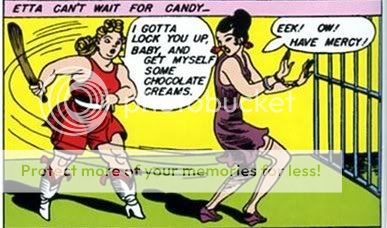
That’s heroine Etta candy, looking far more butch and tough in this early story than she would later on. The butch-femme dynamic, complete with a barely sublimated oral tease, is awfully hard to miss. And then there’s this panel:
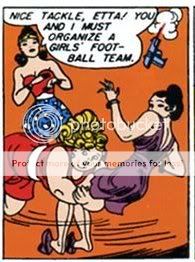
Unlike the last example, I don’t think this is a joke, per se; Etta is really the hero here, and Marston is, as far as I can tell from other issues, completely fine with women’s sports (and indeed, more than fine with them.) The image of Etta dressing up as a football player isn’t meant to be either ludicrous or evil, I don’t think. Given that, it’s hard to see why Poison dressing as a man would necessarily strike him as evil in itself.
3. Men are evil, so women have to dress as men to be evil.
Sort of dovetails with Marston’s philosophy, but doesn’t seem especially likely given (a) the number of female villains he uses in other instances and (b) this panel:
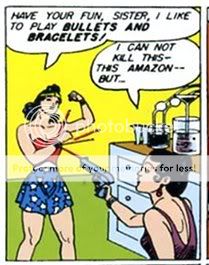
She seems to remain fairly evil even when femme, as far as I can tell.
4. Women are weak, so they need to pretend to be men to gain power.
This is why MTF cross-dressing is always pretty much seen as odder than FTM; culturally, it makes sense for a woman to want to be a man, because men are higher status in various ways. And you could see a later version of this story having Poison reveal that because of the sexism of Japanese culture, she needed to dress as a man to be taken seriously, and so on and so forth.
Again, though, it’s hard to imagine Marston making this argument. Marston thought women were stronger than men in just about every way. In this issue alone, he goes out of his way to make Steve weak and helpless (wheelchair bound), and has not only WW as the superior strong woman, but also Etta, who is (as we’ve seen) quite tough herself.
Ultimately, I think the fact that it’s difficult to pin Marston down here is maybe the most interesting aspect of his use of cross-dressing. I have no doubt (as Richard suggested above) that Marston found role-play and cross-dressing sexy and exciting. But beyond that, he doesn’t explicitly stigmatize it, and, moreoever, doesn’t even really seem to feel that it needs an explanation.
Rawle’s book, on the other hand, is basically nothing but explanation, first, of who would be shallow enough to live their life based on a woman’s magazine (answer: a cross-dresser) and second, of why a man would dress as a woman (answer: because he’s insane.) Explanations are a big part of how society decides who or what is abnormal. You don’t need to explain why men dress as men because that’s normal, but if a man dresses as a woman, you have to explain that, because it’s weird. Except that Marston doesn’t seem to think that it is, particularly.
Steven Grant in commments on one of my recent posts said this about Marston:
As for Marston’s proclivities, I haven’t seen it mentioned anywhere, but it’s hard not to suspect he liked being tied up and restrained, probably responded initially with shame, and egotistically concocted a bondage worldview that obviated any need for shame. So bondage – and the “freedom” that comes with it – becomes not his secret shame but everyone’s secret desire, and the path to emotional liberation. (As with the jargon of most cults, we can assume he believed anyone who didn’t like being restrained was simply repressed, and even more in need of “therapy.” His creation of the lie detector suggests that he had at least some fixation on the notion of secret shame, inventing a (specious. if well-promoted) device that would bring secret shame to light and, from his perspective, begin “correction” of it.
I don’t doubt that there’s something to this…but on the other hand, I think it’s worth noting that Marston’s investment and interest in perversions of various sorts doesn’t manifest solely as a desire to control or correct or diagnose. On the contrary, it often manifests as something that looks rather like tolerance. There are instances, at least, where Marston’s just not especially judgmental about other people’s desires — in part because he’s fetishizing those desires himself, no doubt. Still, speaking as a boring straight guy, it seems to me overall like it would be better to be obliquely fetishized by Marston than to be condescended to and clinicalized by Rawle.
_____________________
Just a couple other notes about this story formally; it’s pretty clear that both Marston and Peter are still kind of finding their feet. Peter’s linework is lovely as always: I really like the curves in this broken door, for example:
Still, you can see Peter struggling a bit with layout and panel composition. This image for example:

the dancing is great, and all the action is nice…but the inset panel is just weird, and looks like it was done at the last minute (look how that one girl is cropped off almost at random.) Partially as a result, the big panel looks crowded and messy, rather than formal and frozen in a way Peter would master shortly.
Marston’s also not quite where he would end up. The plot here involves sorority girls led by WW using their feminine whiles to trick and capture Poison’s guards. Marston, of course, believed that women used their feminine allure to overpower men and force them to submit. Marston never exactly abandons these ideas…but in future issues he tends not to represent them quite so schematically, I think. Certainly, WW does not, as a rule, beat the bad guys by dancing with them. Usually, she slugs them, or outthinks them, or some combination of those. I guess maybe he figured it would strain credulity if she danced her way to victory in every issue.

